Development and Performance Evaluation of Low-Cost 2WT-Operated Earthing-Up Machine for Sugarcane Cultivation in Bangladesh
Abstract
1. Introduction
2. Materials and Methods
2.1. Study Location
2.2. Design Considerations
- (i)
- Line to Line Distance of Sugarcane
- (ii)
- Tyne Selection and Adjustment for Soil Pulverization
- (iii)
- Diameter of Soil Compactor of Earthing-up machine
2.3. Raw Materials
Materials Required
- (i)
- Carbon Steel Plain Sheet (ASTM 1020)
- (ii)
- Mild Steel Bar and Rod (ASTM A36)
2.4. 3D Design of Earthing-Up Machine
2.5. Different Parts of Earthing-Up Machine
2.5.1. Rotary Tiller
2.5.2. Tyne
2.5.3. Furrower Cum Soil Compactor
2.5.4. Casing or Body
2.6. Fabrication of Earthing-Up Machine
2.7. Field Test of Developed Earthing-Up machine
2.8. Performances of Earthing-Up Machine
2.8.1. Soil Moisture Content
2.8.2. Soil Disturbance
2.8.3. Effective Field Capacity
2.8.4. Theoretical Field Capacity and Field Efficiency
2.9. Economic Analysis of the Machine
- (i)
- Ownership Costs of Earthing-up machine
- (a)
- Depreciation
- (b)
- Annual Interest
- (c)
- Total Ownership or Fixed Costs
- (ii)
- Operating Costs of the Machine
- (a)
- Repairs and Maintenance Cost
- (b)
- Fuel Cost
- (c)
- Lubrication Oil Cost
- (d)
- Laborer (Operator) Cost
- (e)
- Total Operating or Variable Costs
- (iii)
- Total Cost of the Machine
- (iv)
- Net Cash Flow (NCF)
- TCha = Total cost of earthing-up machine (BDT/ha);Cmanual = Total cost by manual method (BDT/ha) = × Hym;Hym = Man-hr required (h/ha) = no. of labor (nos./ha) × no. of day × working time (h/day).
- (v)
- Net Present Value (NPV)
- (vi)
- Internal Rate of Return (IRR)
- (vii)
- Benefit–Cost Ratio of the Machine
- (viii)
- Pay-Back Period of the Machine
3. Results and Discussion
3.1. Specification of the Machine
3.2. Field Performance of the Machine
3.3. Soil Moisture and Soil Disturbance
3.4. Financial Performance Analysis of the Machine
3.4.1. Earthing-Up Machine When No Other Operation by Its Power-Tiller
3.4.2. Earthing-Up Tool without Considering Power-Tiller
3.4.3. Earthing-Up Machine When Its Power-Tiller Used for Other Activities
4. Conclusions
Author Contributions
Funding
Data Availability Statement
Acknowledgments
Conflicts of Interest
References
- Bangladesh Economic Review 2020—Finance Division, Ministry of Finance, Government of the People’s Republic of Bangladesh. Available online: https://mof.portal.gov.bd/site/page/28ba57f5-59ff-4426-970a-bf014242179e/Bangladesh-Economic-Review-2020 (accessed on 30 May 2022).
- Pandey, A.; Devkota, S. Prospects and challenges of sugarcane development in Nepal: Production, market and policy. Am. J. Agric. Biol. Sci. 2020, 15, 98–106. [Google Scholar] [CrossRef]
- FAO. Sugarcane Production in 2016. In Crops/Regions/World List/Production Quantity (Pick Lists); UN Food and Agriculture Organization, Corporate Statistical Database (FAOSTAT): Rome, Italy, 2016; Available online: https://www.fao.org/3/br622e/br622e.pdf (accessed on 6 June 2023).
- Vasconcelos, J.C.S.; Speranza, E.A.; Antunes, J.F.G.; Barbosa, L.A.F.; Christofoletti, D.; Severino, F.J.; De Almeida Cançado, G.M. Development and Validation of a Model Based on Vegetation Indices for the Prediction of Sugarcane Yield. Agriengineering 2023, 5, 698–719. [Google Scholar] [CrossRef]
- Bordonal, R.d.O.; Carvalho, J.L.N.; Lal, R.; Figueiredo, E.B.D.; Oliveira, B.G.D.; Scala, N.L. Sustainability of sugarcane production in Brazil. A review. Agron. Sustain. Dev. 2018, 38, 13. [Google Scholar] [CrossRef]
- BBS. 2022. Available online: http://www.bbs.gov.bd/site/page/3e838eb6-30a2-4709-be85-40484b0c16c6/Yearbook-of-Agricultural-Statistics (accessed on 25 February 2023).
- Kumar, S.; Yadav, S.P.; Singh, S.R.S.; Bharti, Y.P.; Sharma, B.L. Effect of various geometry and nutrients management methods in relation to mechanization on productivity of sugarcane (saccharum species hybrid). Plant Arch. 2018, 18, 1317–1320. [Google Scholar]
- Yadav, R.L.; Shukla, S.K. Sugarcane production technology for higher productivity. In Proceedings of the National Seminar on Varietal Planning for Improving Productivity and Sugar Recovery in Sugarcane, Pantnagar, India, 14–15 February 2008; pp. 207–209. [Google Scholar]
- Singh, G.; Chapman, S.C.; Jackson, P.A.; Lawn, R.J. Lodging reduces sucrose accumulation of sugarcane in the wet and dry tropics. Aust. J. Agric. Res. 2002, 53, 1183–1195. [Google Scholar] [CrossRef]
- Aslam, M.; Hameed, A.; Chattha, A.A. Effect of sowing depth and earthing up on lodging in presown sugarcane. Pak. Sugar J. 2008, 23, 6–8. [Google Scholar]
- Saha, K.K.; Hossain, A.; Hoque, M.A.; Jahan, M.A.H.S.; Ahmed, S.; Timsina, J. Development and Performance Evaluation of a Two-Wheeled Power-Tiller Multi-row Weeder. J. Biosyst. Eng. 2021, 46, 36–47. [Google Scholar] [CrossRef]
- Singh, S.; Singh, P.R.; Singh, A.K.; Gupta, R. Present status and future need of mechanizing sugarcane cultivation in India. Agric. Mech. Asia Afr. Lat. Am. 2016, 47, 75–81. [Google Scholar]
- Dharmawardene, M.W.N. Trends in farm mechanization by sugarcane small land holders in Sri Lanka. Sugar Tecnol. 2006, 8, 16–22. [Google Scholar] [CrossRef]
- Nawale, S.A.; Landage, R.S.; Sable, H.P.; Kadu, V.M.; Lende, A.B.; Gharte, L.V. Performance evaluation of low hp tractor drawn sugarcane earthling-up cum fertilizer applicator suitable for wide row sugarcane crop. Int. J. Agric. Environ. Biotech. 2009, 2, 471. [Google Scholar]
- Jadhav, R.T.; Rupnawar, H.D.; Suryavanshi, B.B.; Patil, A.P. Development of indigenous plough for ridging and inter cultural operations for sugarcane crop. ETI-Eng. Techol. India 2013, 4, 1–6. [Google Scholar]
- Rahman, M.A.; Zia Uddin, A.T.M.; Hossain, S.M.I. Economic evaluation of a tunnel type solar dryer. Ann. Bangladesh Agric. 2008, 12, 119–130. [Google Scholar]
- William, E. Estimating Farm Machinery Costs; Iowa State University Extension and Outreach: Ames, IA, USA, 2015. [Google Scholar]
- Rahman, M.; Møller, H.B.; Alam, M. Assessing the energy potential of agricultural residues and an approach to meet the rural energy demand: The Bangladesh perspective. Biomass Convers. Biorefinery 2018, 8, 925–934. [Google Scholar] [CrossRef]
- Gotoh, T.; Teshima, T.; Fujii, Y.; Nagasawa, N.; Ohnishi, M.; Endoh, J.; Ochi, K.; Sukigara, T. Performance and effects on soybean cultivation of disk cultivator-ridger (Part 2)—Comparison of effects on trafficability, soil pulverizing performance and earthing up performance with rotary cultivators. J. Jpn. Soc. Agric. Mach. 2012, 74, 131–139. [Google Scholar]
- Manian, R.; Kathirvel, K.; Reddy, A.; Senthilkumar, T. Development of evaluation of weeding cum earthing up equipment for cotton. Agric. Mech. Asia Afr. Lat. Am. 2004, 35, 21–25. [Google Scholar]
- Nawale, S.A.; Gharte, L.V.; Kadu, V.M.; Lende, A.B. Development and Testing of Bullock Drawn Implement for Interculturing Operations in Sugarcane Crop. Int. J. Agric. Environ. Biotech. 2011, 4, 77–81. [Google Scholar]
- Zhang, X.; Li, H.; Ma, S.; He, J.; Wang, Q.; Chen, W.; Zheng, Z. Effects of key design parameters of tine furrow opener on soil seedbed properties. Int. J. Agric. Biol. Eng. 2016, 9, 67–80. [Google Scholar]

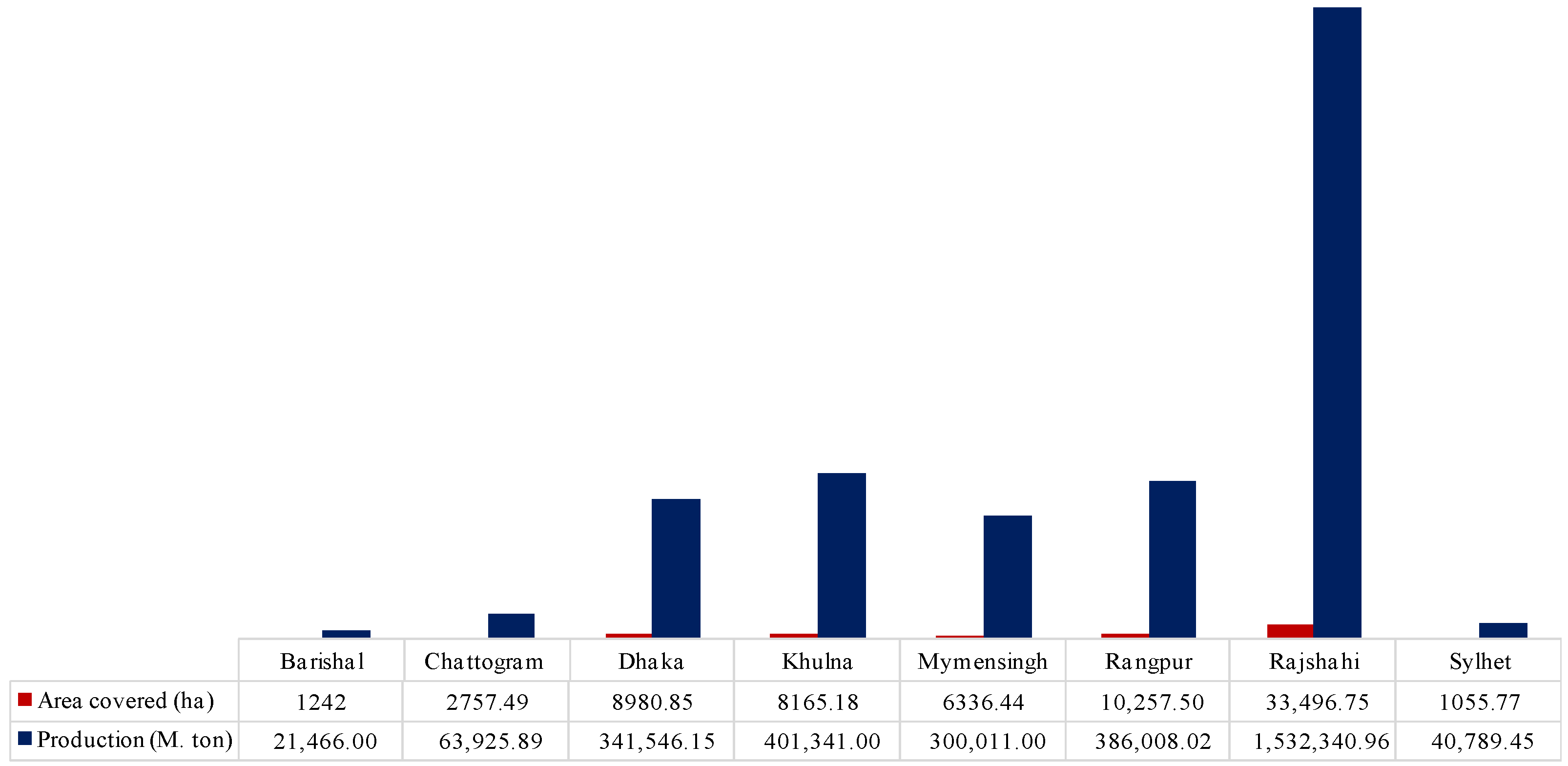
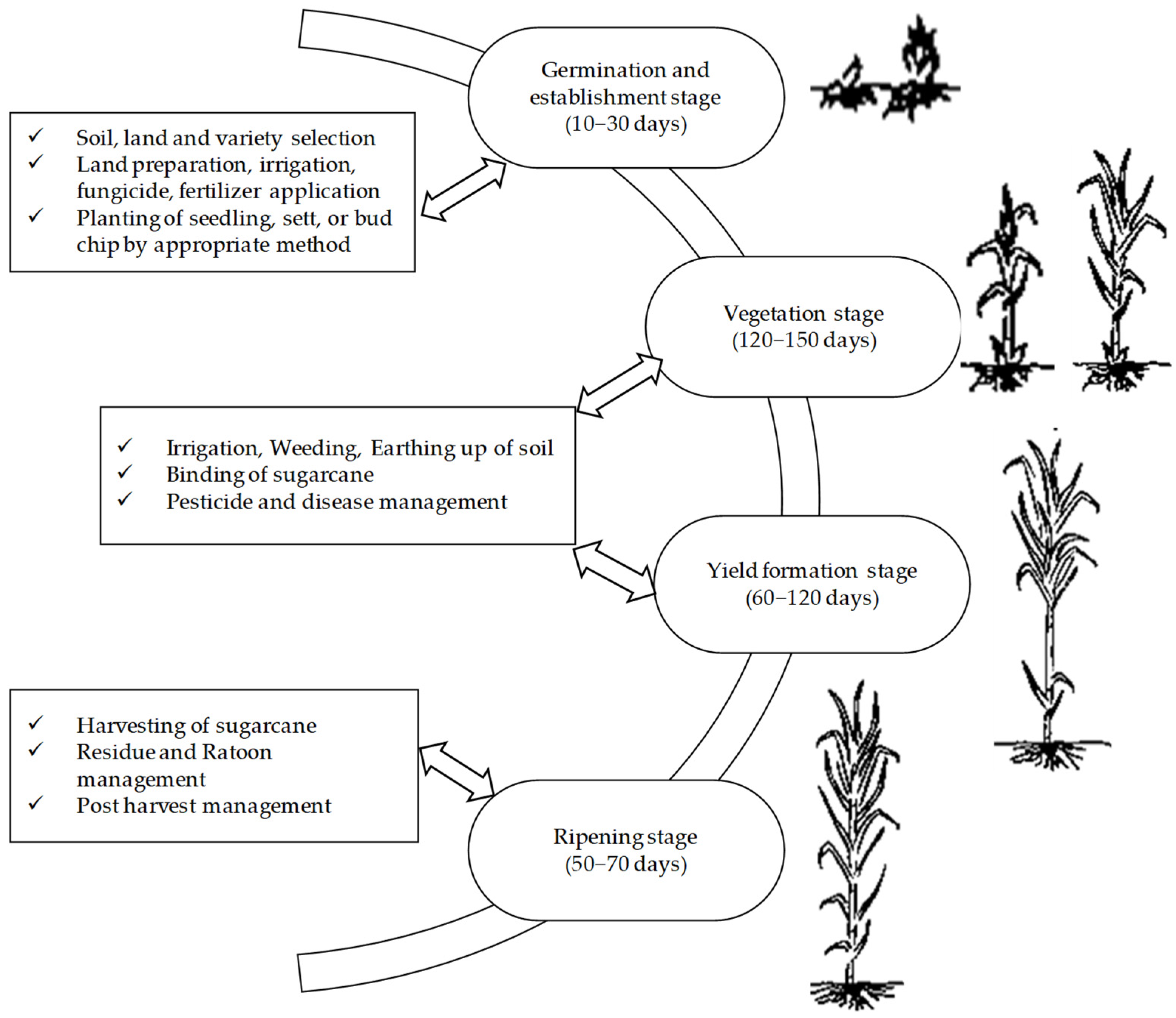

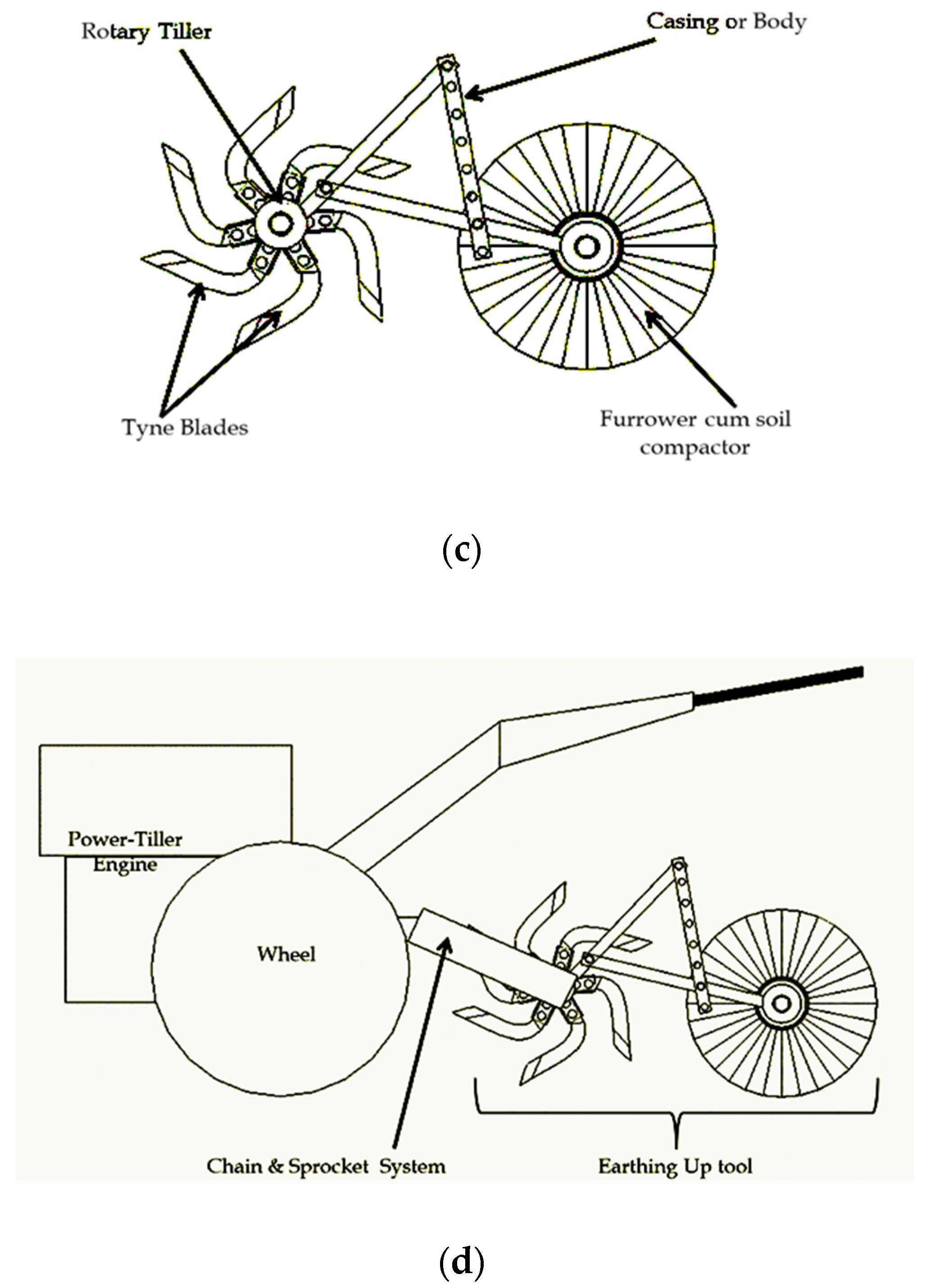
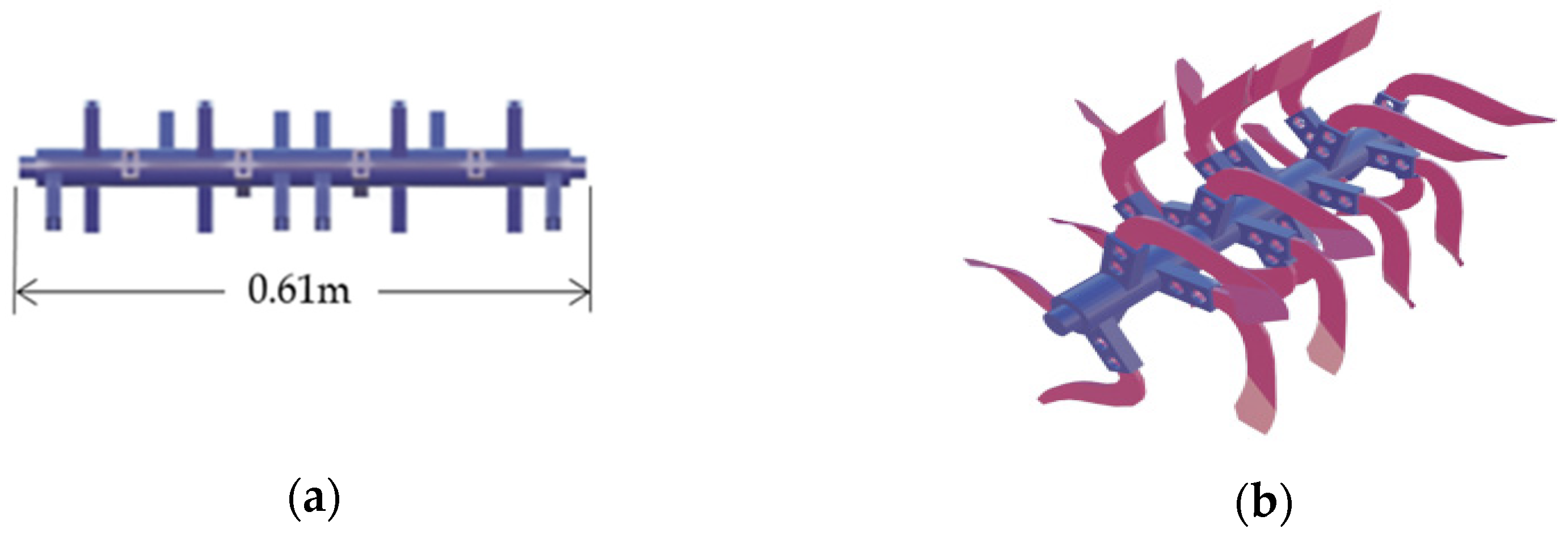
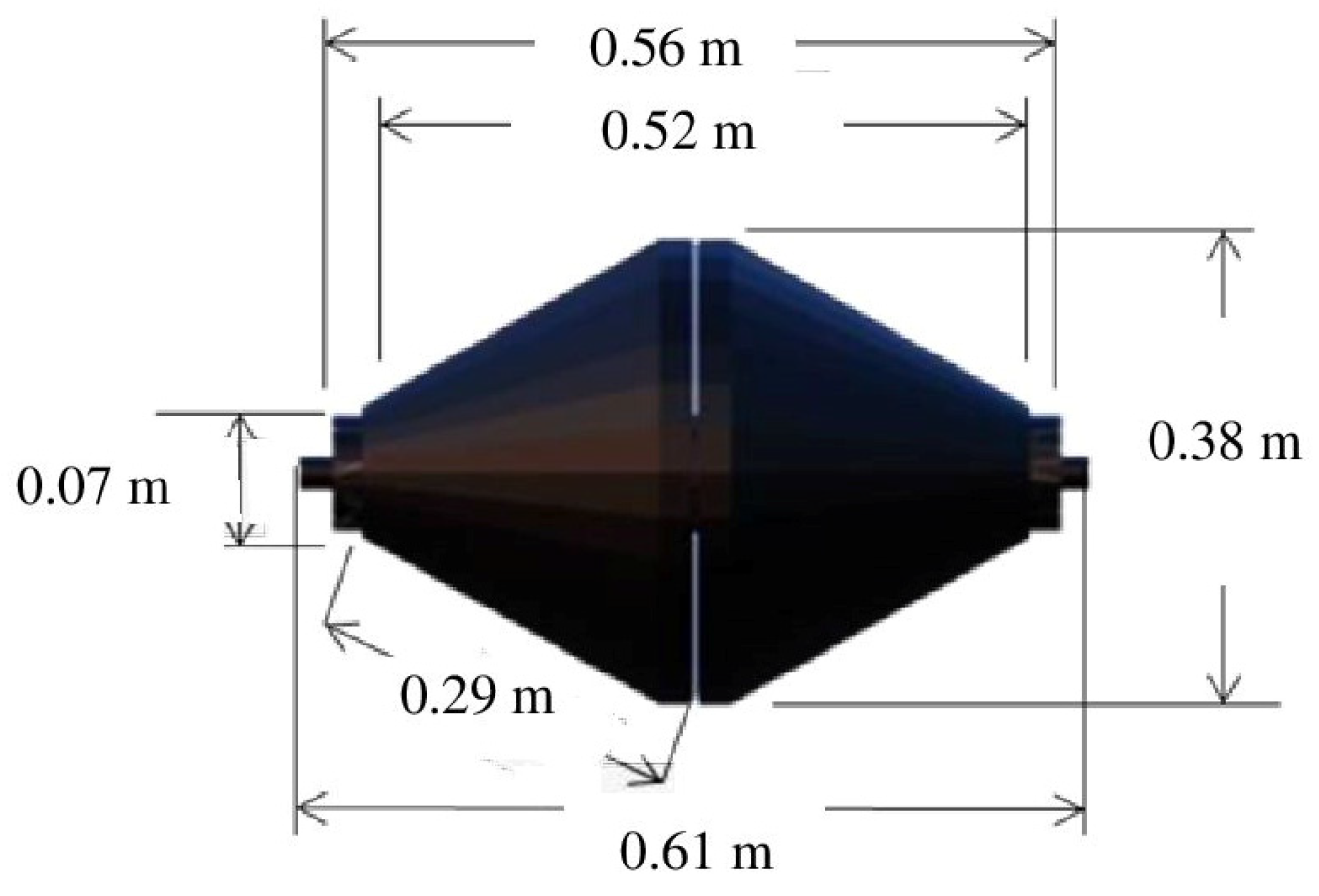
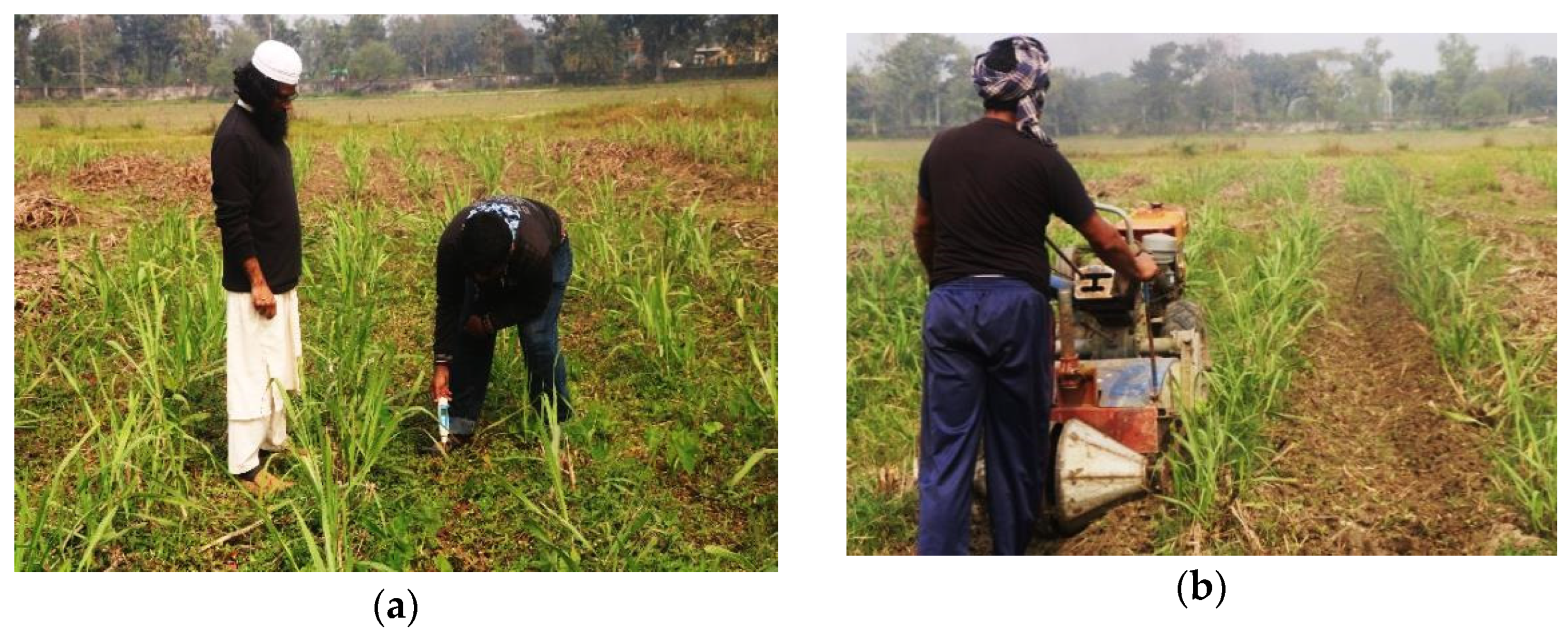
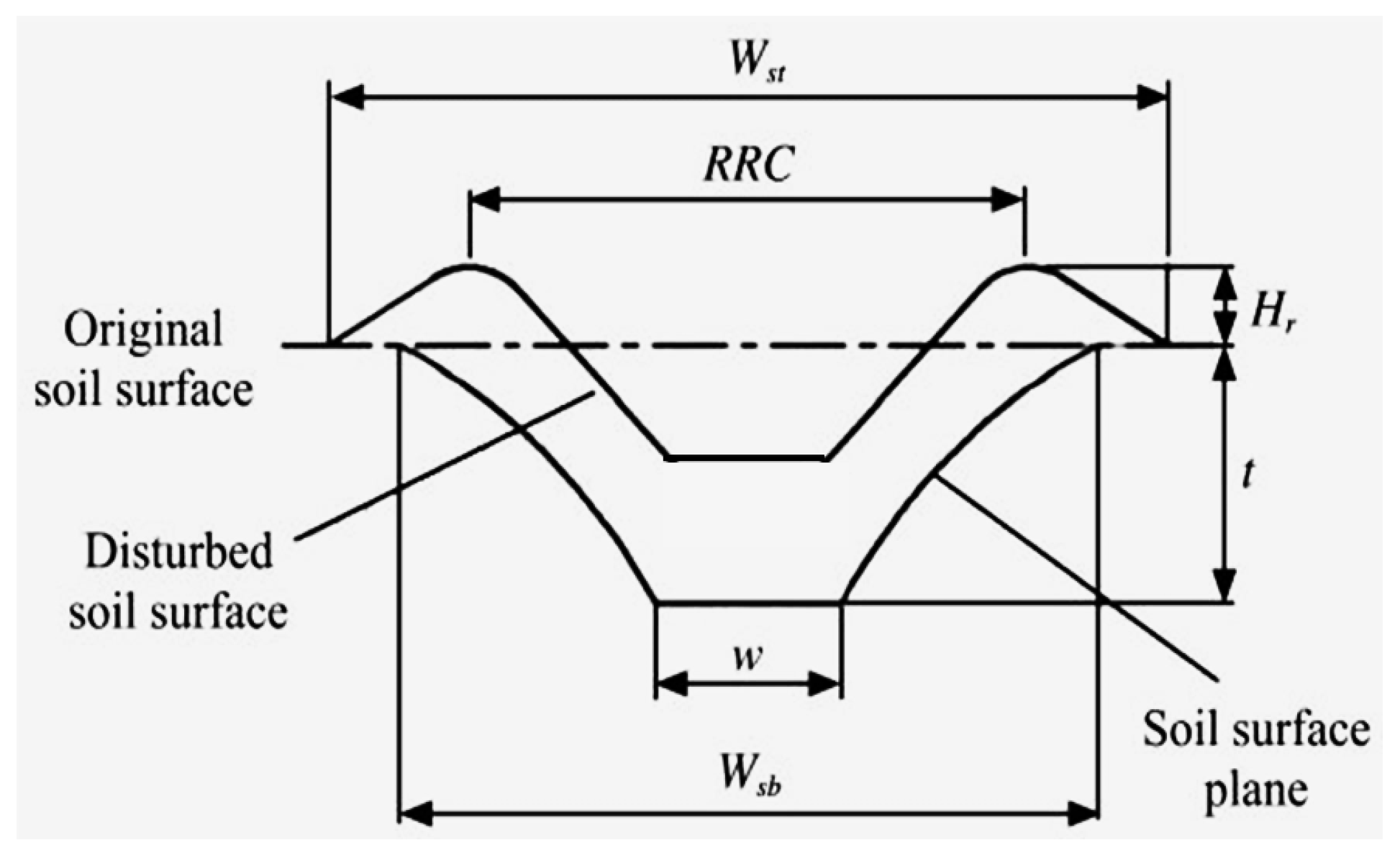
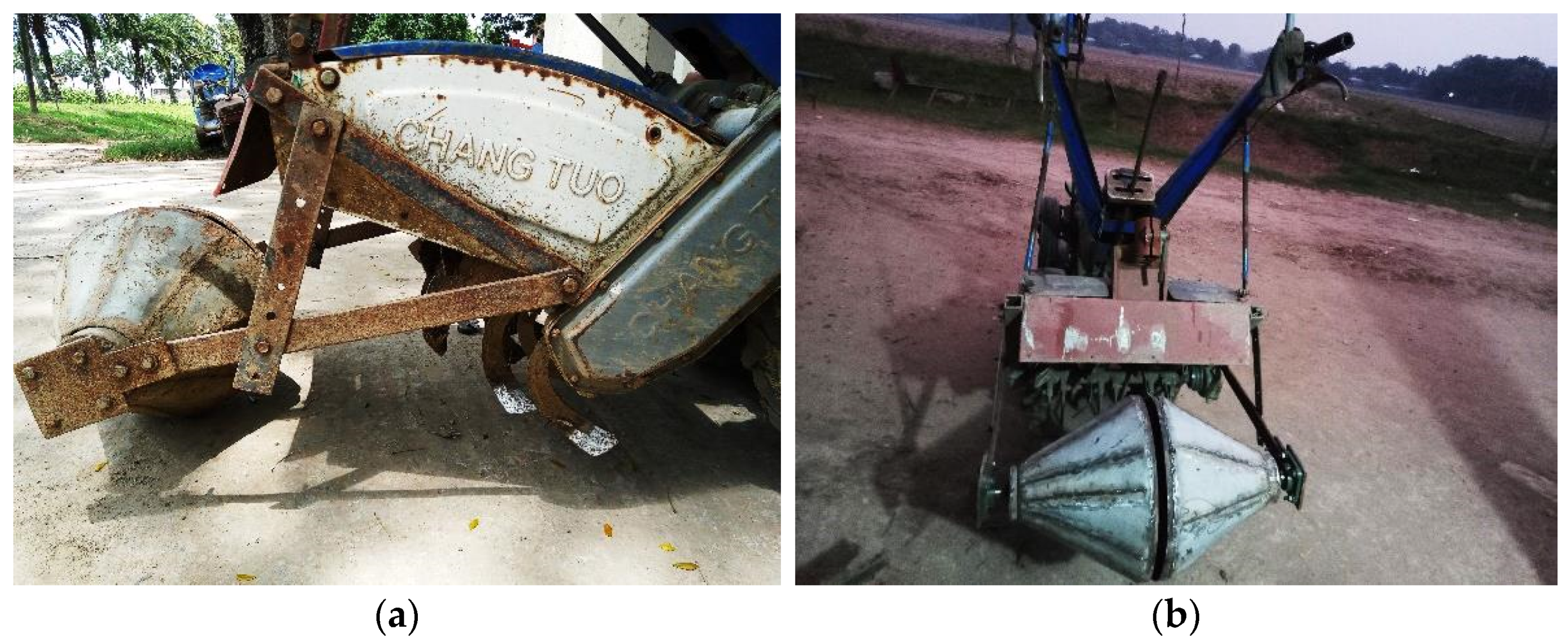
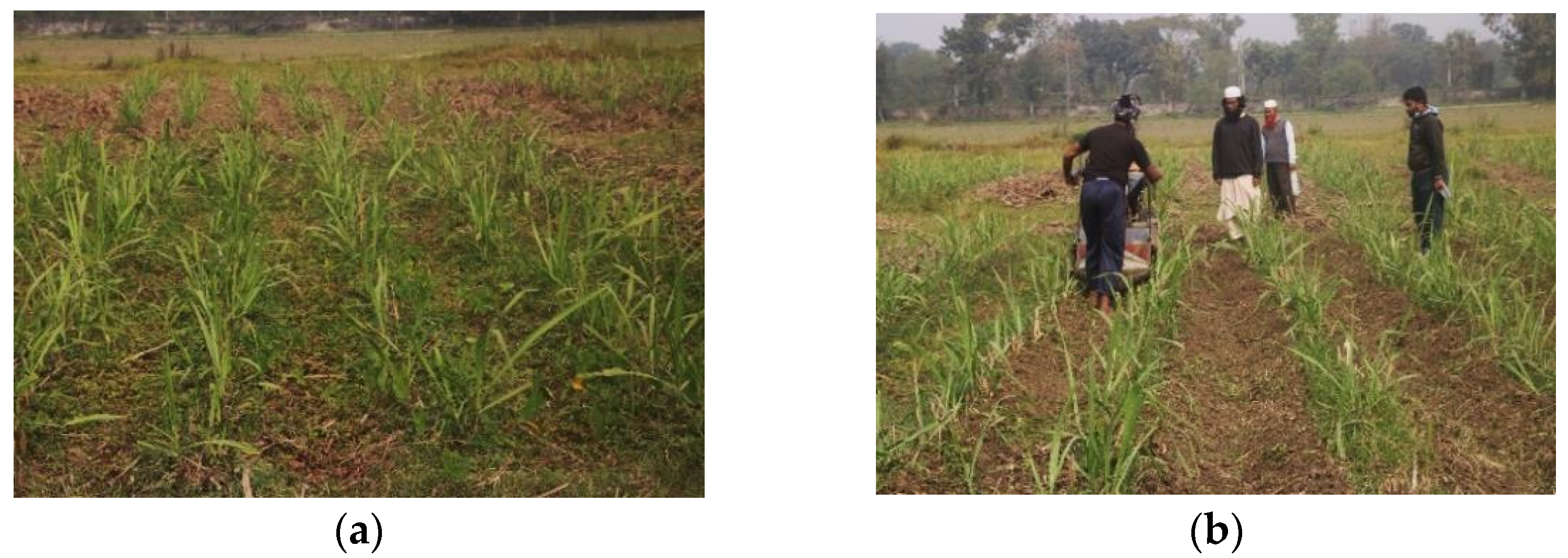
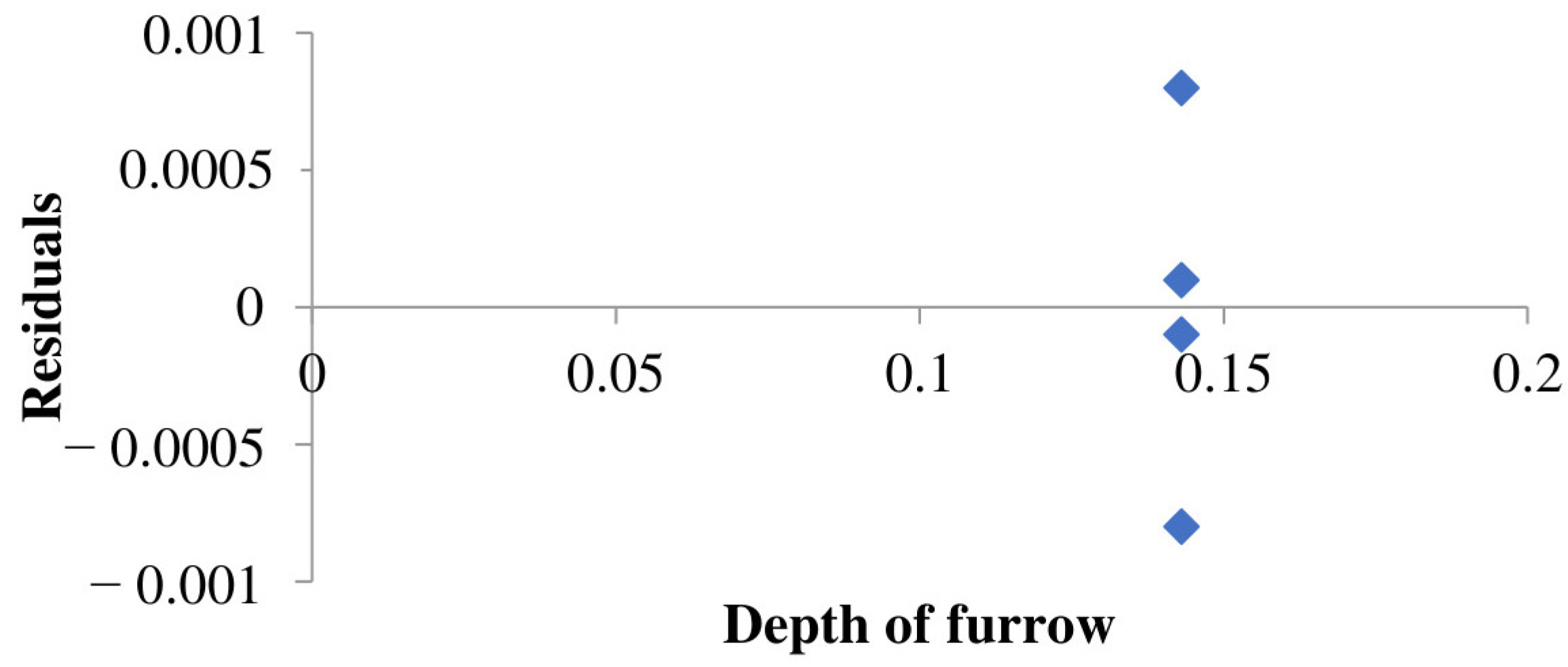
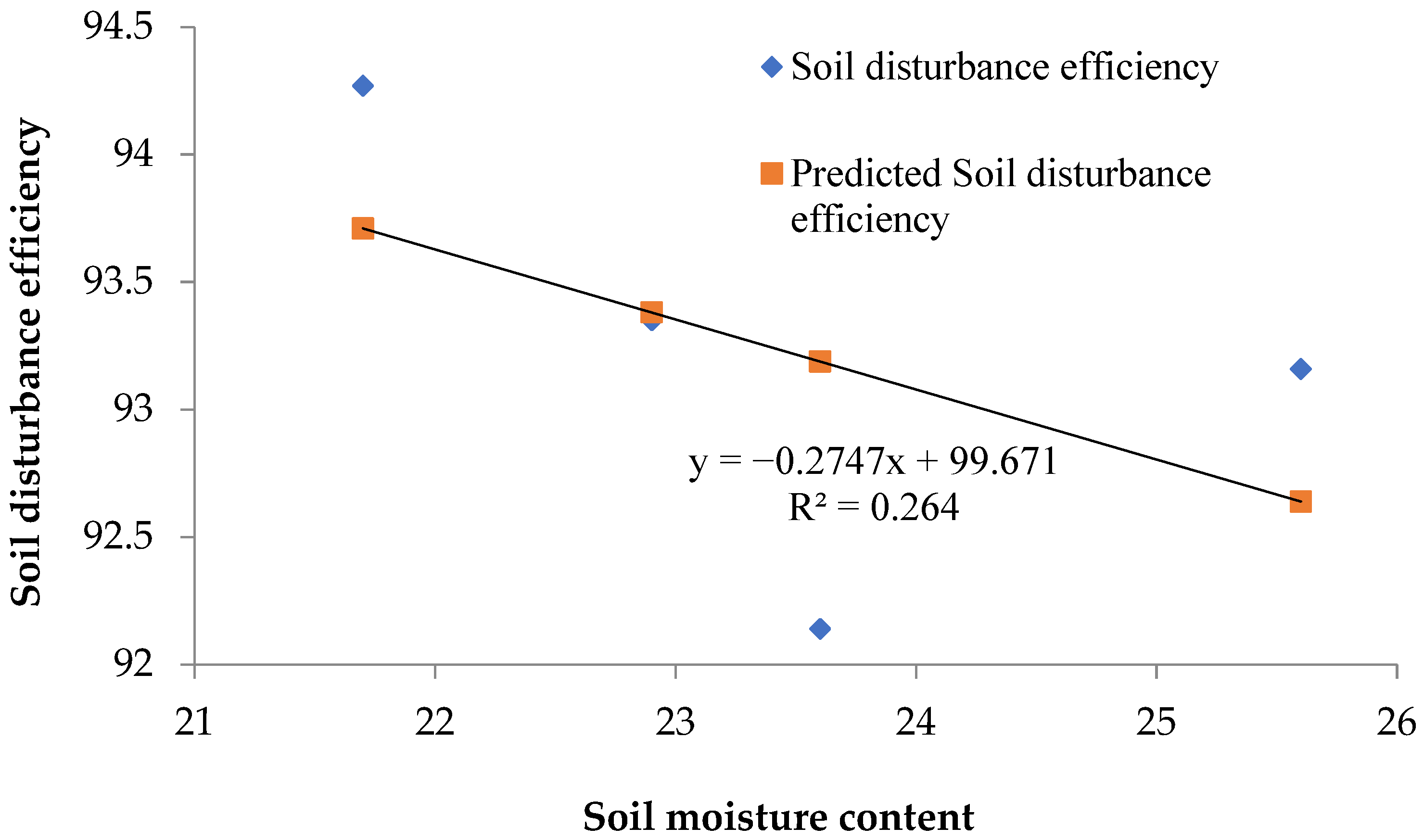
| Parts | Description | Quantity |
|---|---|---|
| Shaft | Furrower shaft | 1 |
| Furrower drum | Conical soil compactor half drum | 2 |
| Bearing | Ball bearing with block | 2 |
| Connecting 1 | Horizontal connecting bar | 2 |
| Connecting 2 | Inclined connecting bar | 2 |
| Lever | Depth control bar | 2 |
| Shaft | Rotary tiller shaft | 1 |
| Radial bearing | Tiller shaft bearing | 2 |
| Tyne blade | R-type or J-shaped rotary tiller Tyne blade | 22 |
| Cover | Rotary tiller cover | 1 |
| Nuts & bolts | 1cm dia. nuts and bolts | 68 |
| Attachment | 1 |
| Items | Specification |
|---|---|
| Type of machine | Walking type earthing-up machine |
| Two-wheeled tractor (power-tiller) | |
| Length | 2.9 m |
| Width | 1.0 m |
| Height | 1.2 m |
| Weight | 370 kg (with drawbar) |
| Engine Power | Model-S 195 (4-stoke diesel engine) Maximum output: 13.2 HP (2000 rpm) |
| Power transmission system | Belt and pulley, gearbox, chain, and sprocket |
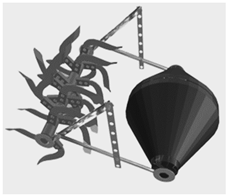 | Assembly name: | Earthing-up tool |
| Date of report: | 24 February 2022 | |
| Stock weight: | 20 kg | |
| Lot size: | 1 | |
| No. of assembly unit: | 1 | |
| Cost per unit: | BDT 15,000 |
| Parameters | Symbol | Unit | Trial 1 | Trial 2 | Trial 3 |
|---|---|---|---|---|---|
| Area covered | A | m2 | 1120 | ||
| Required time | T | min | 85 | 88 | 90 |
| Effective field capacity | Ceff(1,2,…,n) | ha/h | 0.0791 | 0.0764 | 0.0747 |
| Avg. effective field capacity | Ceff | ha/h | 0.0767 ± 0.0025 | ||
| Distance traveled | d | m | 112 | ||
| Traveling time | t | s | 450 | 450 | 450 |
| Machine forward speed | S | km/h | 0.9 | 0.9 | 0.9 |
| Machine working width | w | m | 1 | ||
| Theoretical field capacity | Cth(1,2,…,n) | ha/h | 0.0896 | 0.0896 | 0.0896 |
| Avg. theoretical field capacity | Cth | ha/h | 0.0896 ± 0.00001 | ||
| Field efficiency | e | % | 85.60 ± 2.68 | ||
| Parameters | Symbol | Unit | Trial 1 | Trial 2 | Trial 3 | Trial 4 |
|---|---|---|---|---|---|---|
| Soil moisture content | SMC(1,2,…,n) | % | 22.9 | 23.6 | 25.6 | 21.7 |
| Top furrow width | Wsb | m | 0.47 | 0.46 | 0.47 | 0.48 |
| Bottom furrow width | w | m | 0.071 | 0.078 | 0.069 | 0.061 |
| Depth of furrow | t | m | 0.143 | |||
| Area of furrow cross-section | Af(1,2,…,n) | m2 | 0.0723 | 0.0714 | 0.0721 | 0.073 |
| Soil compactor edge-to-edge width | Wc | m | 0.48 | |||
| Soil compactor middle width | wc | m | 0.008 | |||
| Soil compactor depth | tc | m | 0.16 | |||
| Soil disturbance efficiency | s | % | 93.35 | 92.14 | 93.16 | 94.27 |
| Parameters | Symbol | Unit | Earthing-Up Machine (When No Other Operation by Its Power Tiller) | Earthing-Up Tool (Without Investment for Power-Tiller) | Earthing-Up Machine (When Its Power-Tiller is Also Used for Other Activities) | |
|---|---|---|---|---|---|---|
| Fixed costs | 140,000 | |||||
| Machine life | M | yr. | 20 | 20 | 20 | |
| Salvage value | S | BDT | 7750 | 750 | 7000 | |
| Depreciation | D | BDT/yr. | 7362.50 | 712.50 | 6650.00 | |
| Interest rate | i | decimal | 0.09 | 0.09 | 0.09 | |
| Annual interest | I | BDT/yr. | 7323 | 708 | 6615 | |
| Total ownership or fixed costs | FC | BDT/yr. | 14,686 | 1421 | 13,265 | |
| Operating or variable costs | Repair & maintenance costs | R&M | BDT/h | 3100 | 300 | 2800 |
| Fuel consumption | f | L/h | 1.10 | 1.10 | 1.10 | |
| Fuel price | p | BDT/L | 80 | 80 | 80 | |
| Fuel cost | F | BDT/h | 88 | 88 | 88 | |
| Lubrication oil cost | O | BDT/h | 13 | 13 | 13 | |
| Operator wage | l | BDT/h | 62.50 | 62.50 | 62.50 | |
| No. of operator | n | nos. | 1 | 1 | 1 | |
| Operator cost | L | BDT/h | 62.50 | 62.50 | 62.50 | |
| Total operating or variable costs | VC | BDT/h | 3263 | 463 | 2963 | |
| Total cost of earthing-up machine | Expected total operational time | Hye | h/yr. | 720 | 720 | 480 |
| Total cost/yr. | TCyr | BDT/yr. | 2,364,550 | 335,285 | 1,435,841 | |
| Total cost/h | TChr | BDT/h | 3284 | 465 | 2991 | |
| Avg. effective field capacity | Ceff | % | 0.0767 | 0.0767 | 0.0767 | |
| Total cost/ha | TCha | BDT/ha | 42,819 | 6071 | 39,002 | |
| Net cash flow | Operational man-hr in manual method | Hym | hr/ha | 360 | 360 | 3000 |
| Total manual cost | Cmanual | BDT/ha | 22,500 | 22,500 | 187,500 | |
| Net cash flow | NCF | BDT/ha | −20,319 | 16,428 | 148,497 | |
| Net present value | NPV | BDT | −177,329 | 3053 | 23,184 | |
| Internal rate of return | IRR | % | 4.7 | 3.0 | ||
| Benefit–cost ratio | BCR | decimal | 2.71 | 3.81 | ||
| Payback period | Pp | yr. | 1.57 | 0.58 | ||
Disclaimer/Publisher’s Note: The statements, opinions and data contained in all publications are solely those of the individual author(s) and contributor(s) and not of MDPI and/or the editor(s). MDPI and/or the editor(s) disclaim responsibility for any injury to people or property resulting from any ideas, methods, instructions or products referred to in the content. |
© 2023 by the authors. Licensee MDPI, Basel, Switzerland. This article is an open access article distributed under the terms and conditions of the Creative Commons Attribution (CC BY) license (https://creativecommons.org/licenses/by/4.0/).
Share and Cite
Ferdows, M.N.; Rahman, M.A.; Ali, M.R.; Hanif, M.A.; Tabriz, S.S.; Hossen, M.S.; Rokonuzzaman, M. Development and Performance Evaluation of Low-Cost 2WT-Operated Earthing-Up Machine for Sugarcane Cultivation in Bangladesh. AgriEngineering 2023, 5, 1327-1346. https://doi.org/10.3390/agriengineering5030084
Ferdows MN, Rahman MA, Ali MR, Hanif MA, Tabriz SS, Hossen MS, Rokonuzzaman M. Development and Performance Evaluation of Low-Cost 2WT-Operated Earthing-Up Machine for Sugarcane Cultivation in Bangladesh. AgriEngineering. 2023; 5(3):1327-1346. https://doi.org/10.3390/agriengineering5030084
Chicago/Turabian StyleFerdows, Md. Nafiul, Md. Anisur Rahman, Md. Rostom Ali, Md. Abu Hanif, Sayed Shams Tabriz, Md. Sanowar Hossen, and Md. Rokonuzzaman. 2023. "Development and Performance Evaluation of Low-Cost 2WT-Operated Earthing-Up Machine for Sugarcane Cultivation in Bangladesh" AgriEngineering 5, no. 3: 1327-1346. https://doi.org/10.3390/agriengineering5030084
APA StyleFerdows, M. N., Rahman, M. A., Ali, M. R., Hanif, M. A., Tabriz, S. S., Hossen, M. S., & Rokonuzzaman, M. (2023). Development and Performance Evaluation of Low-Cost 2WT-Operated Earthing-Up Machine for Sugarcane Cultivation in Bangladesh. AgriEngineering, 5(3), 1327-1346. https://doi.org/10.3390/agriengineering5030084






